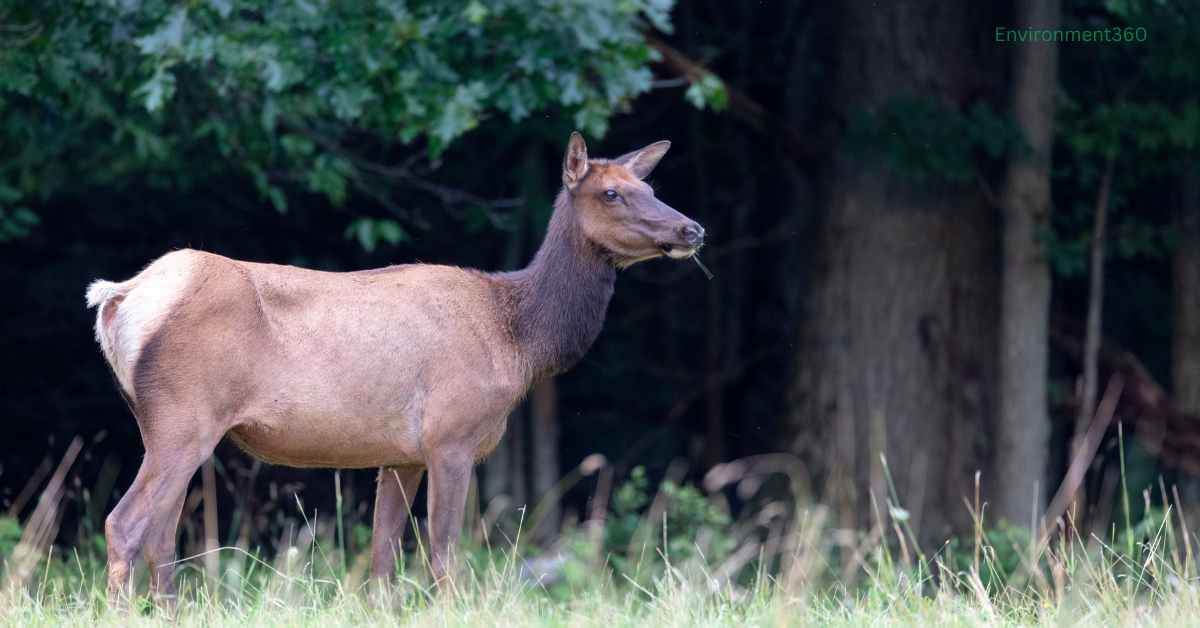Cow elk, or female elk (Cervus canadensis), play an essential role in maintaining the balance of ecosystems across North America. Often overshadowed by their male counterparts (bull elk), cow elk are vital for the survival of their species and contribute significantly to the environment through their behaviors and interactions with other species. As we dive into the life of the cow elk, we will explore their habitat, feeding patterns, reproductive roles, and the environmental challenges they face in a rapidly changing world.
The Importance of Cow Elk in Ecosystems
Cow elk, much like other large herbivores, have a profound impact on their ecosystems. They are not only prey for predators but also influence the structure of plant communities and help maintain biodiversity. Elk play an essential role in seed dispersal, and their grazing patterns can shape landscapes by controlling plant growth. The balance of the ecosystems they inhabit is tightly connected to their existence.
Characteristics and Behavior of Cow Elk

Physical Characteristics of Cow Elk
Cow elk are slightly smaller than bull elk, typically weighing between 500 and 600 pounds (227-272 kg), while bulls can weigh up to 1,100 pounds (500 kg). They stand about 4.5 to 5 feet (1.4-1.5 meters) tall at the shoulder. One of the most distinct differences between cow elk and bulls is the absence of antlers in females. Bulls grow large, branching antlers that can span up to 4 feet (1.2 meters) wide, but cow elk remain antlerless throughout their lives.
Social Behavior and Herd Dynamics
Cow elk are social animals that live in herds, often consisting of other females and their offspring. This social structure provides protection from predators, as the collective vigilance of the herd can help spot dangers before they become immediate threats. These herds, known as cow-calf herds, can vary in size from a few individuals to several dozen. During the rutting season in fall, bull elk join these herds to breed with receptive cows.
Outside of the breeding season, cow elk play a crucial role in maintaining the health of the herd. They are responsible for teaching their young about migration routes, feeding habits, and avoiding predators. Older, more experienced cow elk, often referred to as “lead cows,” are especially vital in leading herds during migrations and locating food sources.
Habitat and Range of Cow Elk
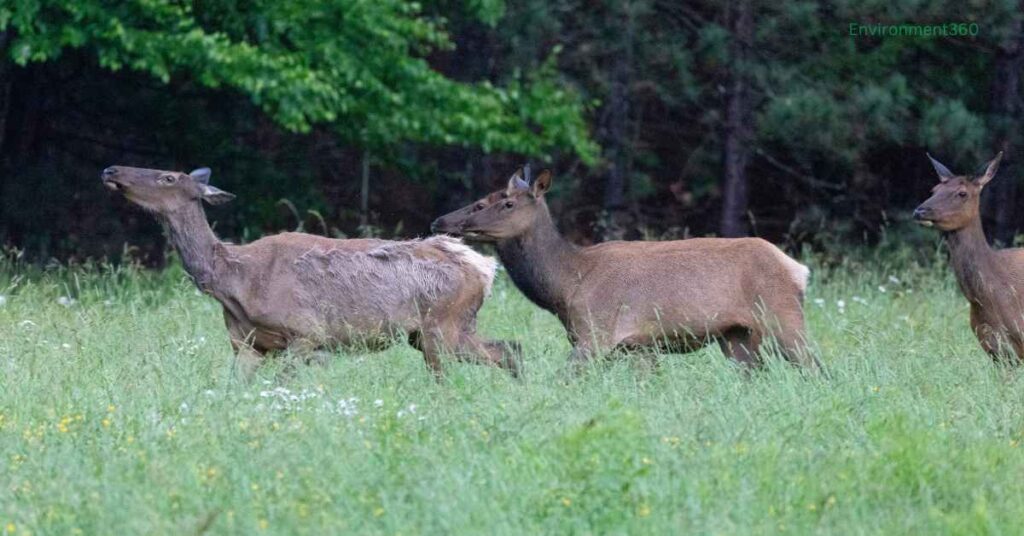
North American Elk Range
Elk are native to North America, and cow elk can be found across the continent, from the forests and mountains of the western United States and Canada to the open plains of the Great Plains. Historically, elk were widespread across the continent, but human activity, including hunting and habitat loss, has significantly reduced their range. Today, elk populations are concentrated primarily in the Rocky Mountains, Yellowstone National Park, and regions in Canada.
Ideal Habitat for Cow Elk
Cow elk thrive in habitats that provide ample food, water, and cover for protection from predators. These habitats often include a mix of grasslands, meadows, and forests. Elk are generalists, meaning they can adapt to various environments, from the high alpine meadows of the Rocky Mountains to the dense forests of the Pacific Northwest.
During the winter, cow elk and their herds often migrate to lower elevations, where snow cover is less dense, and food is more accessible. In summer, they return to higher elevations, where they find lush grasses and forbs that help them replenish energy after a long winter.
Feeding Habits of Cow Elk

Herbivorous Diet
Cow elk are herbivores, meaning they primarily consume plant material. Their diet consists of grasses, forbs, shrubs, and tree bark. They are considered browsers, which means they will eat the leaves, stems, and bark of shrubs and trees, as well as graze on grasses. This feeding behavior allows cow elk to adapt to seasonal changes in plant availability, making them highly versatile herbivores.
In spring and summer, cow elk primarily feed on grasses and forbs, which are rich in nutrients and provide the energy needed for reproduction and raising calves. During the fall and winter, their diet shifts to shrubs and tree bark as grasses become scarcer. They are known to feed on a wide variety of plant species, including aspen, willow, and sagebrush.
Impact on Vegetation and Landscapes
Cow elk have a significant impact on the vegetation and landscapes they inhabit. Through their feeding behavior, they can shape plant communities by promoting the growth of certain species while reducing the abundance of others. This is especially evident in areas where elk populations are high.
One example of this impact is their relationship with aspen trees. Elk often browse on young aspen shoots, preventing them from growing into mature trees. This has led to a decline in aspen populations in some areas, which can affect other species that rely on aspen for habitat and food. However, in areas with healthy predator populations, the presence of wolves or bears can help control elk numbers, allowing aspen and other vegetation to recover.
Reproduction and Life Cycle of Cow Elk
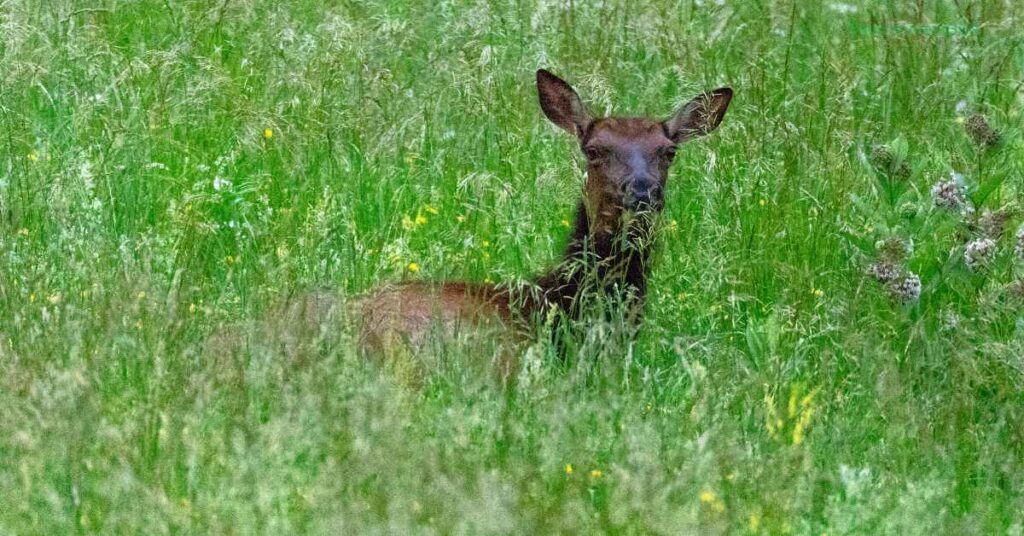
Mating and Breeding Season
The mating season, or rut, for elk occurs in the fall, typically from late September to early October. During this time, bull elk compete for the attention of cow elk by engaging in vocal displays known as bugling. This eerie, high-pitched call can be heard from miles away and serves to establish dominance over other males and attract females.
Cow elk play a central role in the breeding process by selecting which bull to mate with based on their displays of strength and dominance. A dominant bull will gather a harem of cow elk and defend them from other bulls. The strongest bulls are typically the ones that get to mate with the most females, passing on their genes to the next generation.
Calving and Raising Young
After a gestation period of about 8.5 months, cow elk give birth to a single calf in late spring or early summer. These calves are born with a spotted coat that provides excellent camouflage in the tall grasses and underbrush, helping them avoid predators in their early days of life.
For the first few weeks, the cow elk hides her calf in secluded areas while she grazes nearby. The calf remains hidden and still, relying on its spots to blend into its surroundings. After a few weeks, the calf is strong enough to join the herd, where it will stay close to its mother for protection and guidance.
Cow elk are highly protective of their young and will aggressively defend their calves from predators such as wolves, bears, and mountain lions. The survival of the calves is crucial for the continuation of the elk population, and cow elk play a vital role in ensuring their offspring have the best chance of survival.
Predators and Threats to Cow Elk
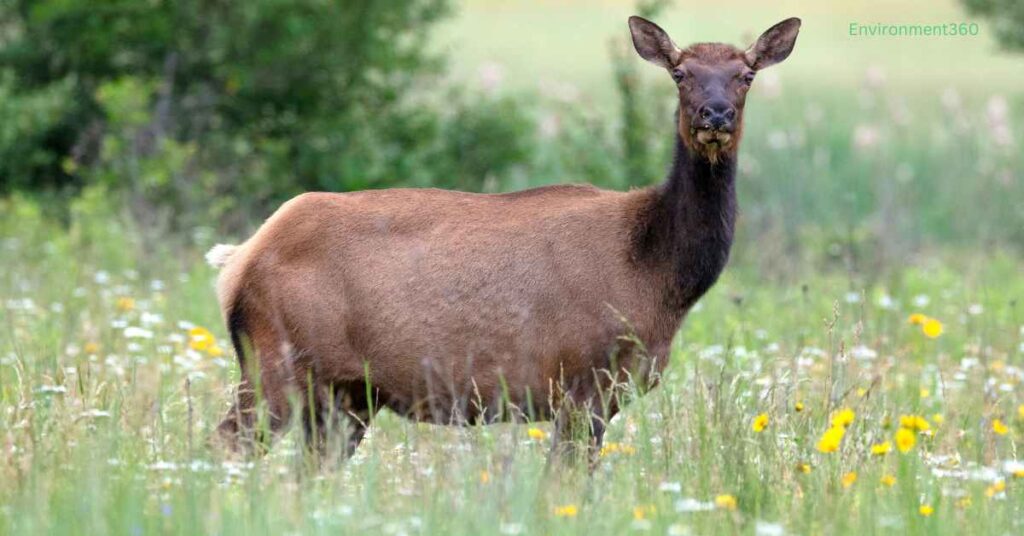
Natural Predators
Cow elk have several natural predators, including wolves, bears, and mountain lions. Wolves, in particular, are highly effective hunters of elk, often targeting the weakest or youngest individuals in the herd. In areas where wolves have been reintroduced, such as Yellowstone National Park, elk populations have experienced a decline, which has led to changes in vegetation and other wildlife populations.
While predators play a natural and essential role in controlling elk populations and maintaining ecosystem balance, they also pose a constant threat to cow elk and their calves. The presence of predators influences the behavior of cow elk, often causing them to be more vigilant and to seek out habitats with better cover for protection.
Human Impacts on Cow Elk
In addition to natural predators, cow elk face significant threats from human activities. Habitat loss due to urbanization, agriculture, and infrastructure development has reduced the availability of suitable habitats for elk. This has led to smaller, more isolated populations that are more vulnerable to environmental pressures.
Hunting is another significant factor affecting cow elk populations. While hunting is regulated in most areas to prevent overharvesting, it still removes individuals from the population and can disrupt herd dynamics. In areas where hunting pressure is high, elk herds may become more skittish and change their behavior to avoid humans, which can affect their feeding and reproductive patterns.
Conservation of Cow Elk and Their Habitat
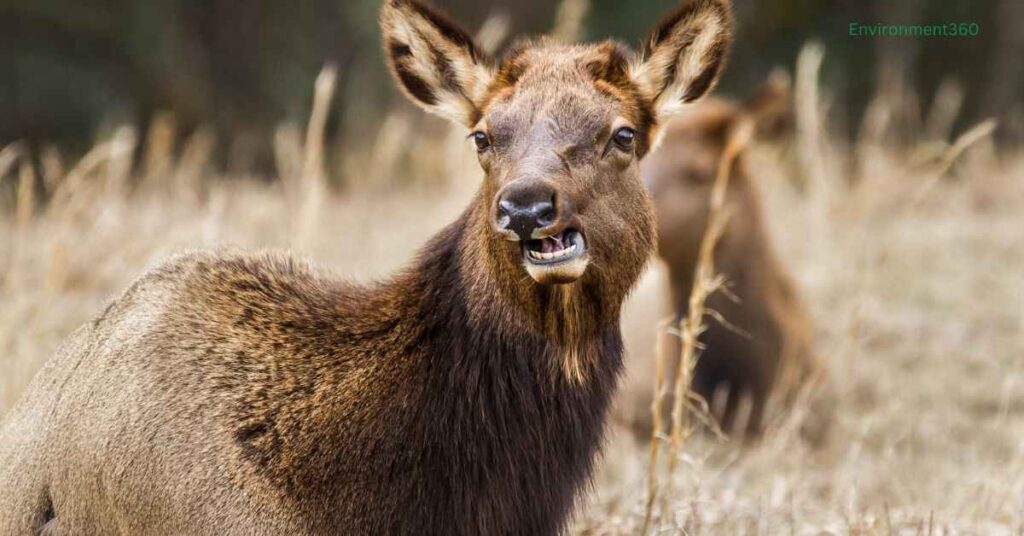
Conservation Status
Elk populations in North America are generally stable, but there are localized populations that are at risk due to habitat loss and fragmentation. In some regions, particularly in the eastern United States, elk were extirpated (locally extinct) due to overhunting and habitat destruction. However, efforts to reintroduce elk to these areas have been successful in recent years.
The conservation of cow elk is closely tied to the preservation of their habitats. Protecting large tracts of land that provide food, water, and cover for elk is essential for maintaining healthy populations. This includes not only national parks and wilderness areas but also working landscapes where elk can coexist with human activities.
Conservation Efforts and Reintroduction Programs
Several conservation organizations and government agencies are working to protect elk populations and their habitats. In the early 20th century, elk populations were in decline due to unregulated hunting and habitat destruction. Conservation efforts, including the establishment of protected areas and regulated hunting seasons, have helped elk populations recover in many parts of North America.
In areas where elk were extirpated, reintroduction programs have been successful in restoring elk to their native ranges. For example, in the Great Smoky Mountains of Tennessee, elk were reintroduced in 2001 after being absent for nearly 150 years. These reintroduction efforts have not only helped to restore elk populations but also brought ecological benefits by reestablishing the role of elk as a keystone species in these ecosystems.
The Role of Cow Elk in Cultural and Ecological Significance

Cultural Importance of Cow Elk
Elk have played an important role in the cultural history of Native American tribes and early European settlers in North America. For many indigenous communities, elk were a vital source of food, clothing, and tools. The hides of cow elk were used for making clothing and shelter, while their antlers and bones were used for tools and ceremonial objects.
Even today, elk hunting remains an important cultural tradition for many communities. Regulated hunting seasons provide opportunities for hunters to harvest elk for meat and other resources, while also contributing to wildlife management and conservation efforts.
Ecological Significance of Cow Elk
Cow elk play a crucial role in maintaining the health and balance of ecosystems. As large herbivores, they influence plant communities through their grazing and browsing behaviors, which can promote biodiversity by preventing any one plant species from dominating the landscape. Their movements across the landscape also help to distribute seeds, which can aid in the regeneration of plant communities.
Elk are also an important prey species for large predators such as wolves, bears, and mountain lions. The presence of elk in an ecosystem supports these predator populations, which in turn helps to regulate other prey species and maintain the overall balance of the ecosystem.
Challenges and Future of Cow Elk Conservation
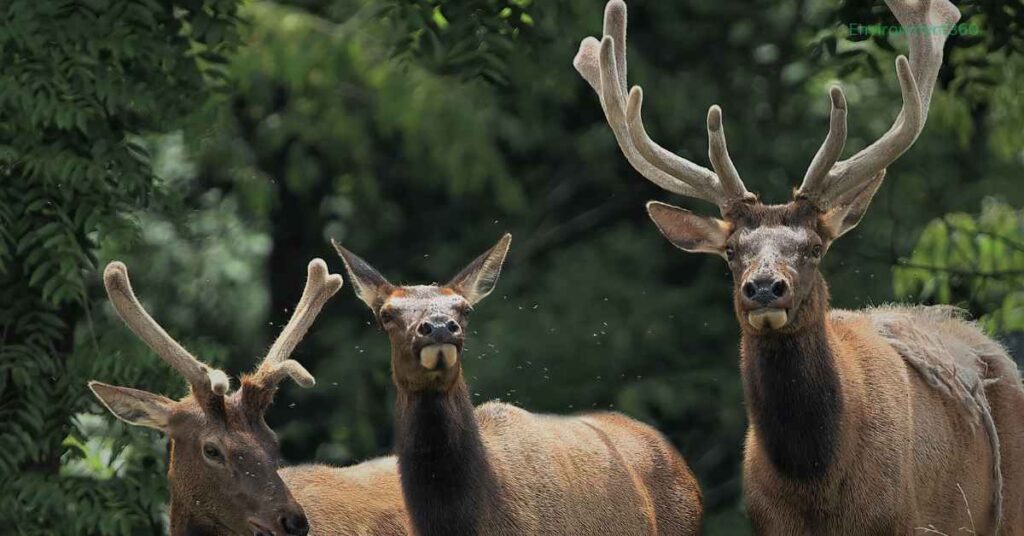
Climate Change and Its Impact on Cow Elk
One of the biggest challenges facing cow elk and other wildlife species is the impact of climate change. As temperatures rise and weather patterns become more unpredictable, the availability of food and water for elk is likely to change. Warmer winters may reduce snowpack in some areas, affecting the availability of water during the dry summer months.
In addition, climate change could alter the distribution of plant species that elk rely on for food. For example, changes in precipitation patterns may cause certain grasses and forbs to become less abundant, while others may thrive. These changes could force elk to migrate to new areas in search of food, potentially putting them in conflict with human activities such as agriculture and urban development.
The Importance of Continued Conservation Efforts
Despite the challenges posed by climate change and human activities, there is hope for the future of cow elk conservation. Ongoing research and monitoring efforts are providing valuable insights into how elk populations are responding to environmental changes. These efforts are helping wildlife managers develop strategies to ensure that elk populations remain healthy and sustainable.
Public awareness and support for elk conservation are also crucial. By promoting sustainable land use practices, protecting critical habitats, and reducing human-wildlife conflicts, we can help ensure that cow elk and other wildlife species continue to thrive for generations to come.
In conclusion, cow elk are not only a vital part of North America’s natural heritage but also play a key role in maintaining the health and balance of ecosystems. Through continued conservation efforts, we can protect these majestic animals and the environments they call home.
Conclusion
Cow elk, as essential members of North American ecosystems, play a pivotal role in maintaining the balance of their habitats. Through their feeding, migration, and social behaviors, cow elk shape the landscapes they inhabit, influencing plant communities and supporting the food chain. Their significance goes beyond ecological functions, touching on cultural and historical aspects of human societies, especially among Indigenous peoples and conservation communities.
However, cow elk faces numerous challenges, from habitat loss and human interference to the unpredictable effects of climate change. These factors can disrupt migration patterns, reduce food availability, and threaten the sustainability of elk populations.
Read More: Orange Animals: The 10 Most Famous Species and Their Environmental Significance

